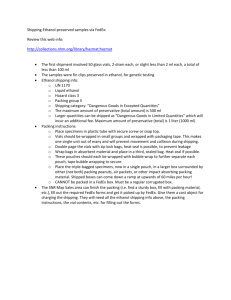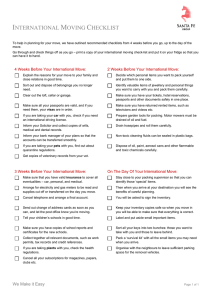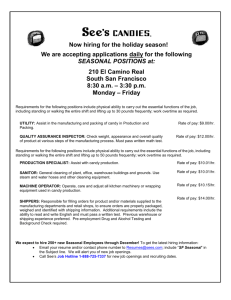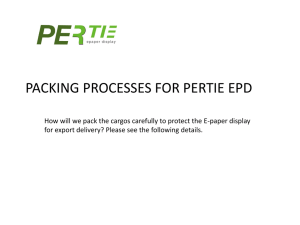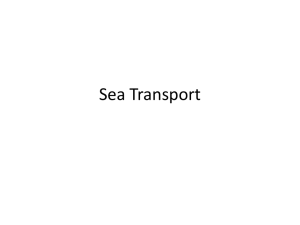Packing and Shipping Museum Objects
advertisement
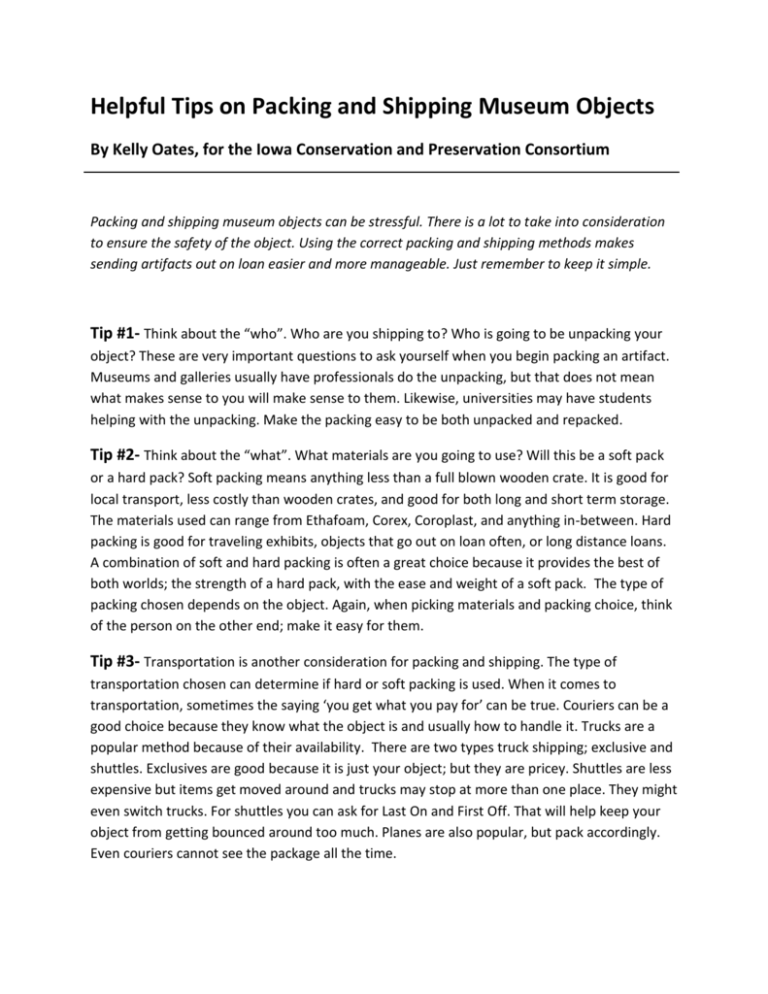
Helpful Tips on Packing and Shipping Museum Objects By Kelly Oates, for the Iowa Conservation and Preservation Consortium Packing and shipping museum objects can be stressful. There is a lot to take into consideration to ensure the safety of the object. Using the correct packing and shipping methods makes sending artifacts out on loan easier and more manageable. Just remember to keep it simple. Tip #1- Think about the “who”. Who are you shipping to? Who is going to be unpacking your object? These are very important questions to ask yourself when you begin packing an artifact. Museums and galleries usually have professionals do the unpacking, but that does not mean what makes sense to you will make sense to them. Likewise, universities may have students helping with the unpacking. Make the packing easy to be both unpacked and repacked. Tip #2- Think about the “what”. What materials are you going to use? Will this be a soft pack or a hard pack? Soft packing means anything less than a full blown wooden crate. It is good for local transport, less costly than wooden crates, and good for both long and short term storage. The materials used can range from Ethafoam, Corex, Coroplast, and anything in-between. Hard packing is good for traveling exhibits, objects that go out on loan often, or long distance loans. A combination of soft and hard packing is often a great choice because it provides the best of both worlds; the strength of a hard pack, with the ease and weight of a soft pack. The type of packing chosen depends on the object. Again, when picking materials and packing choice, think of the person on the other end; make it easy for them. Tip #3- Transportation is another consideration for packing and shipping. The type of transportation chosen can determine if hard or soft packing is used. When it comes to transportation, sometimes the saying ‘you get what you pay for’ can be true. Couriers can be a good choice because they know what the object is and usually how to handle it. Trucks are a popular method because of their availability. There are two types truck shipping; exclusive and shuttles. Exclusives are good because it is just your object; but they are pricey. Shuttles are less expensive but items get moved around and trucks may stop at more than one place. They might even switch trucks. For shuttles you can ask for Last On and First Off. That will help keep your object from getting bounced around too much. Planes are also popular, but pack accordingly. Even couriers cannot see the package all the time. Tip #4- Think about the “where”. Whether or not an object is traveling domestically or internationally also plays a big part in how it is packed and shipped. If it is traveling internationally there are many things to think about, like, will there be cargo trucks, boats, planes? What about the language barriers? Customs at airports? Is that country having a holiday? When it comes to the destination, again think about the other guy. If you are shipping from Iowa, will your methods make sense to someone unpacking it in Spain? Tip #5- When packing an object remember it has inherent strength, and pack round it. Objects usually ship how they are most sturdy, i.e. a coffee mug would ship upright. Paintings ship upright but works on paper ship flat. Tip #6- Think about vibration and shock. The factors affecting the transmission of shock are the weight of the object, stiffness of the packing, damping of the packing materials, and construction and fit. Making a tight fit will help reduce shock and vibration. Fit, weight, and materials all work together. Tip #7- Material choice is also key when packing and shipping. All of the following materials are good options. For basic fill use peanuts, foam (hard and soft), paper, Styrene, cotton wadding, mattress padding, and polyester. For basic wraps- muslin, broad cloth, furniture padding, poly sheeting, bubble wrap (with bubbles facing out), Tyvek, Teflon, and Dartek. Using tape is a necessity, but remember to provide tabs for easy opening. To make walls or boxes use foamcore, Gator board, Corex, cardboard, blue board, honeycombed cardboard, and corrugated cardboard. Combining these materials will make strong boxes and help keep artifacts safe. Tip # 8- Creating inner and outer boxes will provide extra strength and create a micro environment. To help lock everything into place you can use various methods including sunken lids. Tip #9- When packing fragile artifacts sometimes creating a nest using cotton batting and muslin over Ethafoam is best. This way the artifact can nestle into the form and it will use its own weight to create a locked-in environment. Tip #10- Remember to keep it simple! Additional Resources Preparation, Art handling, and Collections Care Information Network- A network for packing, art handling, and collections care. They have great forums about all sorts of topics, including tips and solutions, materials, case studies, workshops and conferences, and the basics. www.paccin.org Masterpak- This is a great catalog of archival materials for packing, shipping, and storage. They also offer free catalogs and samples, which is a good way to become familiar with different types of materials. www.masterpak-usa.com Fine Art Ship Blog- Fine Art Shipping is a company out of Los Angeles, and they do just that, ship fine art. This blog is great. It discusses packing and shipping issues and has tags for easy search and navigation. There are also pictures which is really helpful to understand what people in the packing and shipping world are talking about. www.fineartship.com/blog
